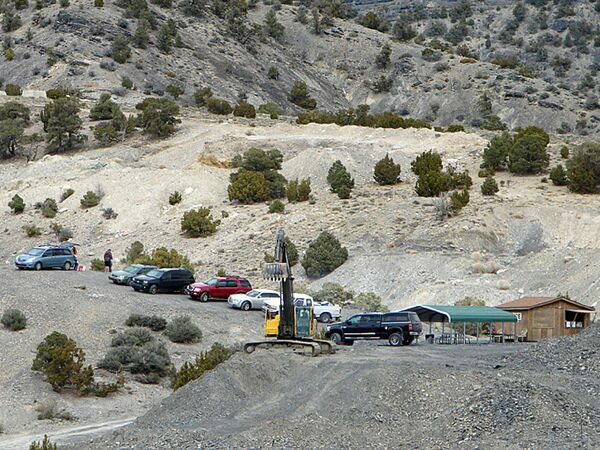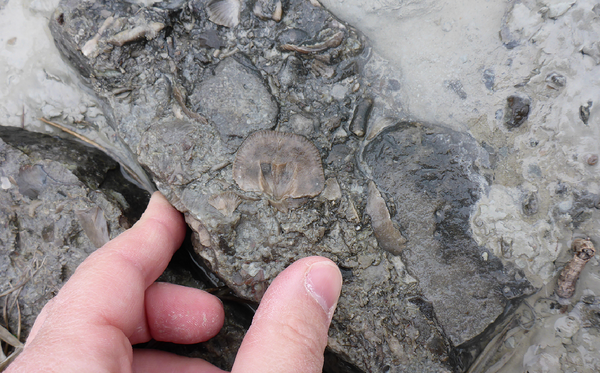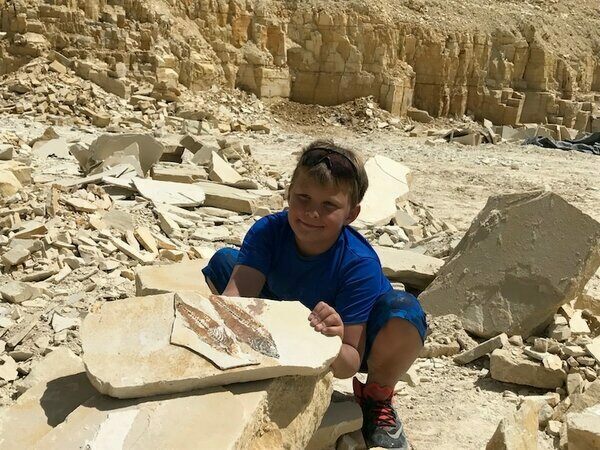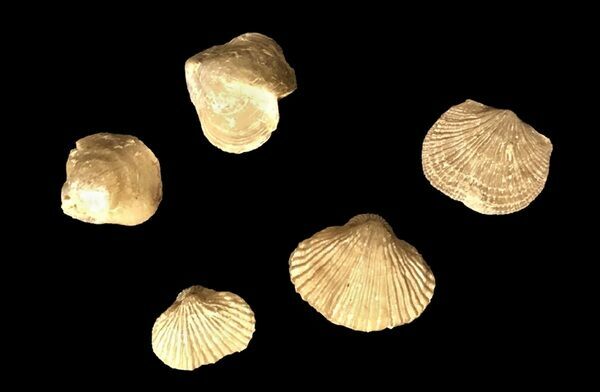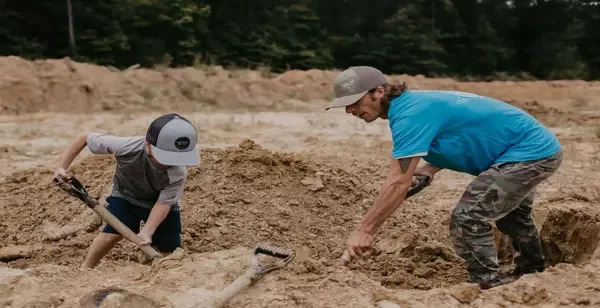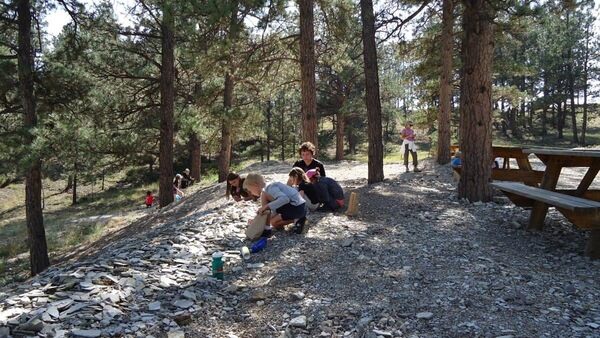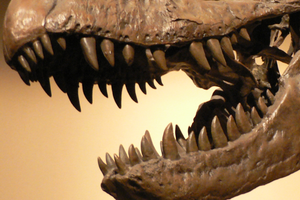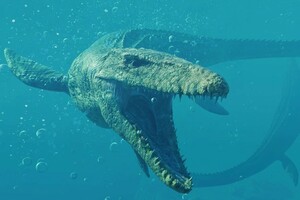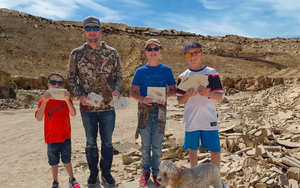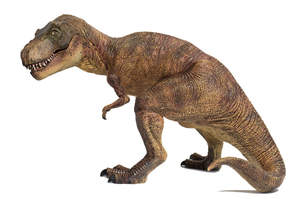Where To Hunt Fossils? Fossil Parks & Pay-Per-Dig Quarries
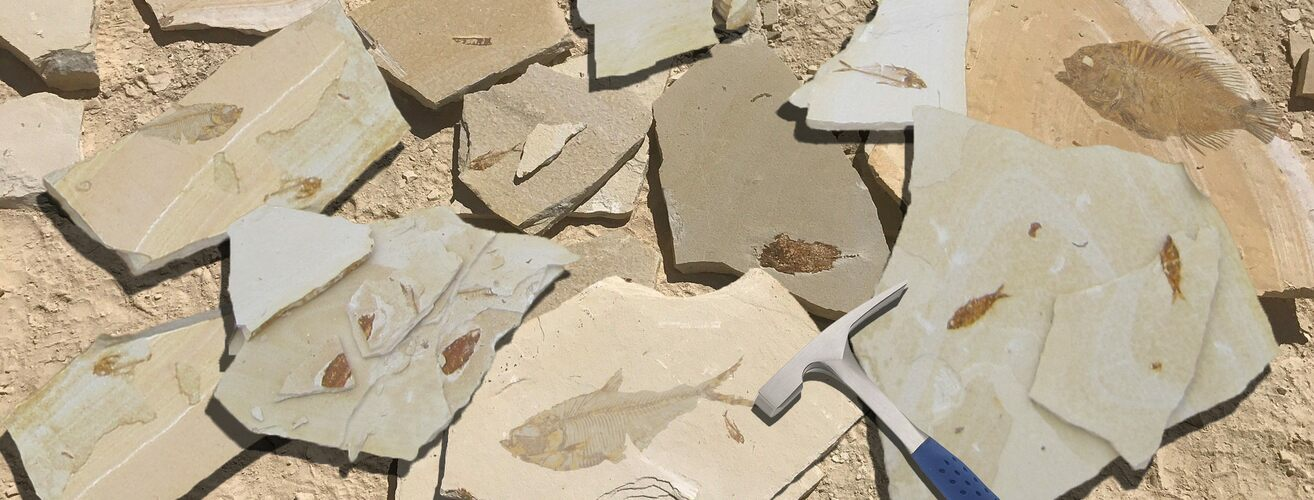
Fossil fish found at the Fossil Lake Safari dig near Kemmerer, Wyoming by customers.
Fossil Parks and Pay per Dig Quarries are a great place to start. These places are located in areas chock-full of fossils, and you are virtually guaranteed to find some. In most cases not only do you get to dig for fossils, but you get to keep what you find!
1. Fossil Lake Safari by FossilEra - Kemmerer, Wyoming
Within the Eocene-aged Green River Formation, just outside Fossil Butte National Monument near Kemmerer, WY, is FossilEras own Fossil Lake Safari. It is FossilEra’s own private quarry adjacent to the national monument that offers the amateur fossil hunter the experience of a lifetime. Delve into the world’s premier fossil beds, boasting dozens of species of fish, plants, insects, along with rare birds, reptiles, and mammals. Allow our seasoned team to craft a once-in-a-lifetime experience for you. And the best part? You get to keep the fossils you discover!
Our quarry is located within Wyoming’s famed Green River Formation layers known as Fossil Lake. Fossil Lake is considered one of the world’s premier sites for finding fossils, especially of fish from these ancient lake beds. You’re sure to encounter numerous fish fossils from one of the world’s most biodiverse fossil sites, and see firsthand why the mysteries of Fossil Lake have long captivated scientists and fossil hunters alike.
Our pay-to-dig quarry is open 8:00AM to 5:00 PM from May 24th to September 30th, and requires no reservations to get digging: we do recommend making reservations for busier, weekend days, and reservations are required for groups larger than 15. FossilEra Adventures provides you with tools, maps, and guidance to ensure you enjoy your fossil collecting experience safely. At this location you are allowed to collect and keep any of the fish that you find. You split the rock yourself, but many people find all the fossils they could want within a couple of hours!
Check out the website at FossilSafari.com
2. U-Dig Fossils Trilobite Quarry - Delta, Utah
If you have ever wanted to find a complete trilobite, this is the place to go! U-Dig Fossils is a pay quarry situated in the desert west of Delta, UT. The quarry is in the heart of the famous Wheeler shale which has many types of beautifully preserved Cambrian trilobites, including the famous Elrathia trilobites. On average, visitors find between 10 and 20 trilobites each day. Just by simply splitting the shale! Their website has a full calendar of times and dates the site is open. You can even book a dig ahead of time for your convenience. Trip Report
3. Penn Dixie Fossil Park & Nature Reserve – Hamburg, New York
The Penn Dixie Fossil Park in Hamburg, NY takes you back in time to the Devonian, around 385 million years ago. During this time, western NY was at the bottom of a shallow sea containing a reef system. This reef has been fossilized in the limestones and mudstones throughout this part of the state. An area at the Penn Dixie Park has the reef exposed at your feet. Simply walk around and pluck fossils from the ground. If you are more adventurous, you can bring tools and dig into the layer to find better preserved fossils that include corals, brachiopods, and trilobites, including the state fossil, the Eldgredgeops (phacops) rana trilobite. Website
4. Dig Wyoming Dinosaurs – Newcastle, Wyoming
Located in the area of Newcastle and Lusk, Wyoming, Dig Wyoming Dinosaurs is now offering premier dinosaur dig tours in the Lance Formation. Expect to have fun, because there is nothing more exciting than brushing away the sandstone to reveal a beautifully preserved dinosaur tooth or bone. Success is guaranteed. Triceratops teeth are by far the most common dinosaur fossils you will find. The other dinosaur and associated fossils you can find belong to Champsosaurus, Myledaphus, Pachycephalosaurus, Leptoceratops, Edmontosaurus, Nanotyrannus, Tyrannosaurus rex, Nodosaurus, Struthiomimus, Thescelosaurus, various raptors, multiple species of fish, multiple species of crocodiles, salamanders, frogs, multiple species of turtles, mammals, plant fossils, and who knows what else. That new-to-science fossil could be just under the surface! Website
5. Caesar Creek Spillway – Waynesville, Ohio
Sitting in the middle of an ancient Ordovician reef is Caesar Creek State Park. It’s located in Waynesville, Ohio, almost exactly between Cincinnati and Columbus. A spillway runs through this park which exposes a few football fields worth of Ordovician reef. These Ordovician reef fossils are round 445 million years old and include corals, brachiopods (clam like animals), and trilobites. Fossil here are so plentiful, it’s hard not to step on them while searching for the perfect specimen! Before you search, you have to get a free fossil permit from the visitors’ center. With this permit, they will also give you a nice little "Common Fossils" pamphlet that describes the types of fossils you will find. Also be sure to view the displays of the fossils that you can find at the spillway. No tools are allowed, and you can only to collect fossils that fit in the palm of your hand. Website
6. Stonerose Interpretive Center and Eocene Fossil Site - Republic, Washington
If Paleozoic seafloors are not your cup of tea, you may want to try some younger fossil beds. The Stonerose Center in Republic, WA has 49 million year old Eocene leaves and occasionally insects exposed at an area called the Boothill fossil site. Here, you can use a hammer and chisel to split layers of shale looking for beautiful leaf impressions. You can keep up to 3 fossils per trip. There is an admission fee and the hours vary, so please check their website before visiting. Website
7. American Fossil Quarry – Kemmerer, Wyoming
This place is for the more serious fossil hunter. If you’ve collected your share of fossil leaves and would like to explore more Eocene fossils, try the American Fossil Quarry in Kemmerer, WY. This quarry exposes the famous Green River formation. Here, as you split shale, you’ll mainly find fish, but sometimes insects and plants can be found as well. On rare occasions, fossil reptiles and mammals are found, though this is not guaranteed. A nice bonus of American Fossil, is that they have rock saws at the site to trim your finds, which makes the fossils significantly easier to get home!
8. Shark Tooth Hill - Ernst Quarries – Bakersfield, California
Fossil shark teeth are always fun to find, and this place is loaded with them! Located in Bakersfield, CA, this desert area was once on the bottom of the ancient Temblor sea. During the Miocene, around 15 to 16 million years ago, this sea was teaming with sharks, whales, and other sea life. Although megalodon teeth are not common here, many other sharks were, including fierce looking Carcharias planus teeth. Along with a fee, you need to reserve a spot ahead of time. Ernst Quarries provides you with the tools to find the shark teeth, which mainly consists of digging and sifting. Website
9. Fossil and Prairie Park Preserve - Iowa
Located in Rockford, IA, this fossil preserve has 365 million year old Devonian reef exposures from a shallow sea. Fossils include brachiopods, corals, and cephalopods. Here, the fossils are simply lying on the ground and fresh rains constantly uncover new fossils. No tools are allowed, you only need your hands to pick them up! Website
10. Paleoadventures Dinosaur Digs – South Dakota
What about dinosaurs? Yes, there are indeed places where you can hunt for dinosaurs, and keep the bones! One such place is located near Belle Fourche, SD, which sits on the late Cretaceous Hell Creek Formation. Here, Paleoadventures takes you back 65 million years to prime dinosaur country where you can carefully excavate the formation, searching for dinosaur fossils. Bones and teeth from famous dinosaurs such as Edmontosaurus, Triceratops, and even T-rex are commonly found! There is a fee to dig, and the digging season books up fast, so you have to reserve a spot well ahead of time. But if you’ve ever wanted to find dinosaur fossils, this pay per dig outfitter is great! Website
11. Palmetto Fossil Excursions – Charleston, South Carolina
Palmetto is a real treat for east-coast fossil hounds! Led by paleontologists Skye and Joshua Basak, Palmetto offers numerous field paleontology excursions for eager fossil hunters to several Paleocene and Oligocene dig sites around South Carolina. Dig up your very own river Meg tooth on single-day, multi-day, academic or monthly membership digs! Palmetto Fossil Excursions even offers coastal fossil hunting marathon trip packages to give fossil hunters a taste of the rich fossil beds of the Carolina coast. If you're mad for river Megs, Palmetto knows all the right places to find your favorites! Website
12. Mineral Wells Fossil Park - Mineral Wells, Texas
Located just west of the city of Mineral Wells in north-central Texas sits this fantastic dig site chock full of fossils from the Pennsylvanian Period. This site used to be a borrow pit operated by the city of Mineral Wells, but as 300-million-year-old marine life began eroding out of the area after the pit closed, it's become a mecca for amateur and experienced fossil hunters alike. Dig to your heart's content for crinoids, trilobites, brachiopods, gastropods, and other ancient treasures of the late Carboniferous at this fantastic free park--and keep what you find! Website
13. Florissant Fossil Quarry - Florissant, Colorado
Tucked into the Rocky Mountains about an hour west of Colorado Springs, Colorado sits this privately-owned quarry full of life preserved from the Late Eocene. Dig for various fossils of plants, insects, and occasional fish on the site of a 34-million-year-old lakebed that was once surrounded by redwood forests and showered with ash from ancient volcanoes. The Clare family has operated this site since the 1970s, working closely with the nearby Florissant Fossil Beds National Monument to educate visitors about the formation's rich biodiversity. For a small fee, dig all day and take home what you keep! Website
14. Ladonia Fossil Park - Ladonia, Texas
Not only does this site satisfy the paleontologist in your life, but it has something for archaeologists, too! This quarry, owned and operated by the Upper Trinity Regional Water District (UTRWD) in northeastern Texas, contains all kinds of marine fossils dating as old as the Cretaceous period, but fossil hunters have occasionally found arrowheads and spear tips from the early Caddo, an indigenous people living in northern Texas and Oklahoma today. Fossil hunters can prepare to find various gastropods, shellfish, mosasaur teeth, and in rare instances fossilized remains of Columbian mammoths that roamed Texas from about 400,000 to 12,000 years ago. The current dig site is a temporary site along the North Sulphur River, but a newer, permanent fossil dig park will open when the UTRWD completes construction of a dam and subsequent reservoir, Lake Ralph Hall. Website
15. Tate Dinosaur Safaris - Casper College, Casper, WY
If you thought digging for bones couldn't be a luxury experience, the Tate Fossil Safaris are here to prove otherwise. These are exclusive, week-long excursions hosted by JP Cavigelli, field operations and lab prep manager of the Tate Geological Museum, part of Casper College in Casper, Wyoming. Each year, Cavigelli takes up to eight explorers out to their choice of a Jurassic dig in the Morrison Formation near Medicine Bow, Wyoming, or a Cretaceous dig in the Lance Formation near Lusk in eastern Wyoming. For a fee of $1,150, you'll receive not just seven days of digging personally supervised by Cavigelli, but also premier lodging, meals, and transportation out of Casper, to and from the dig sites each day, and back to Casper at the end of your trip. Discover the rich history of some of Wyoming's premier fossil formations and experience field work with expert paleontologists! Website
 Reviews
Reviews
